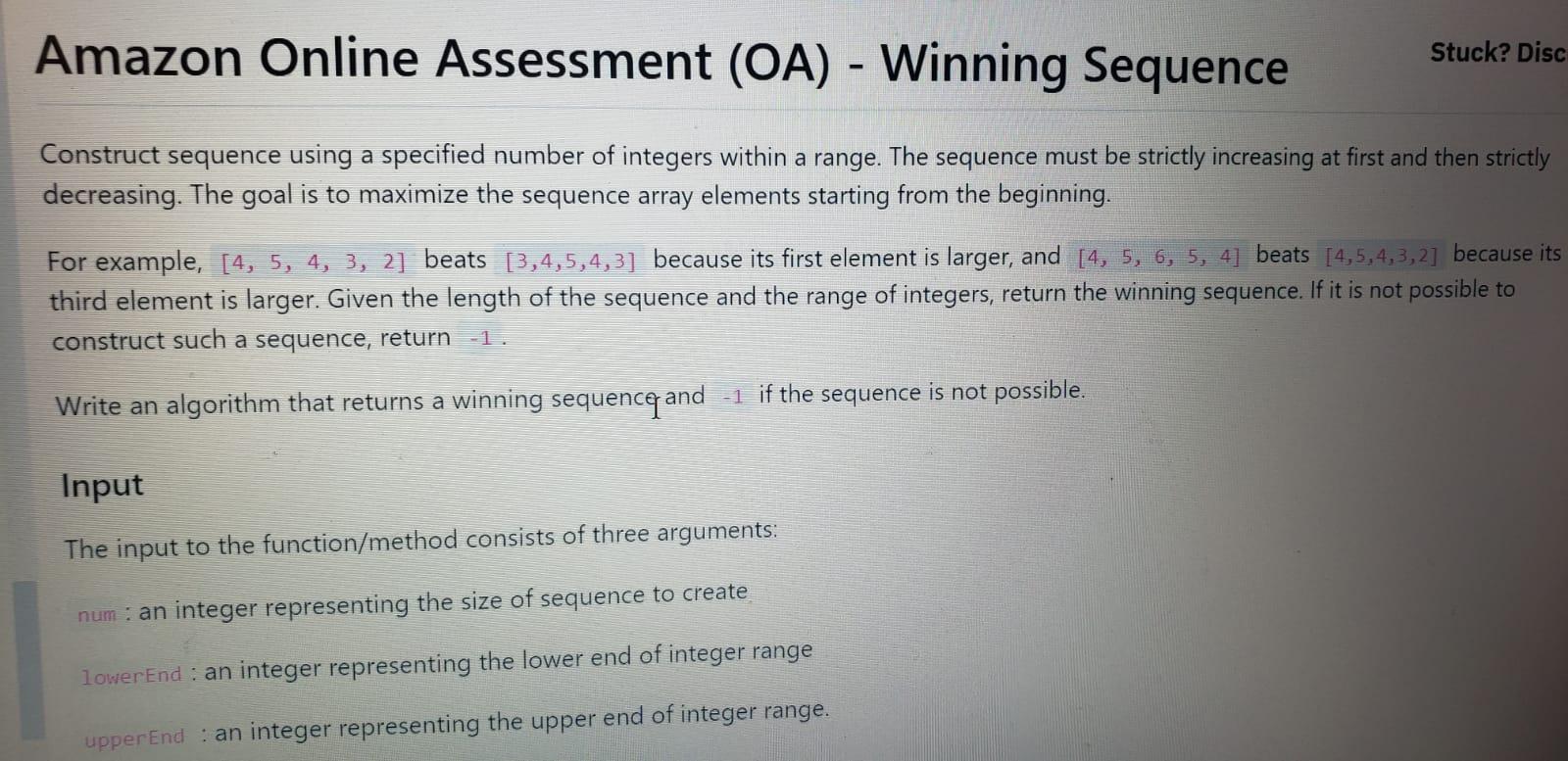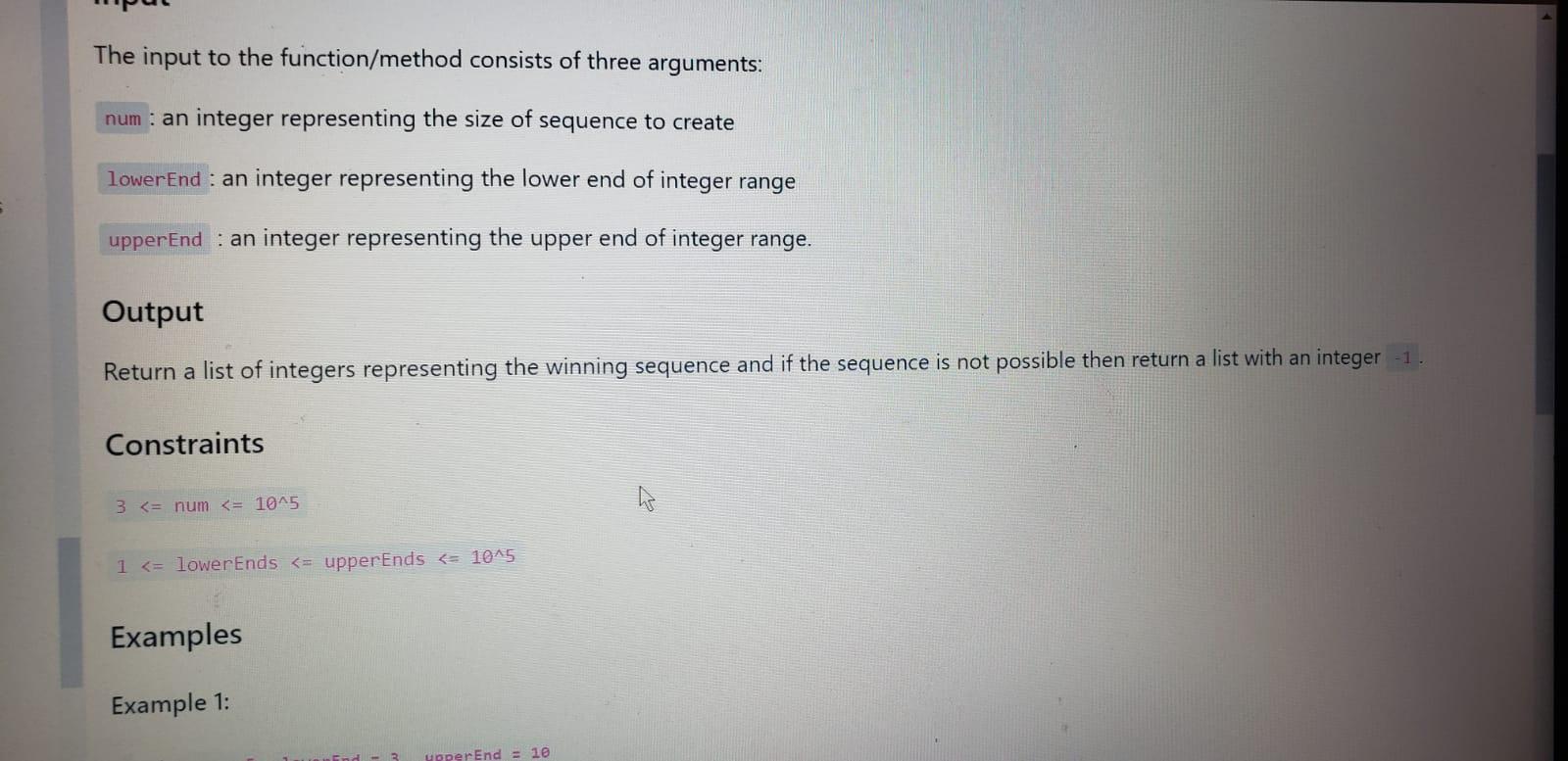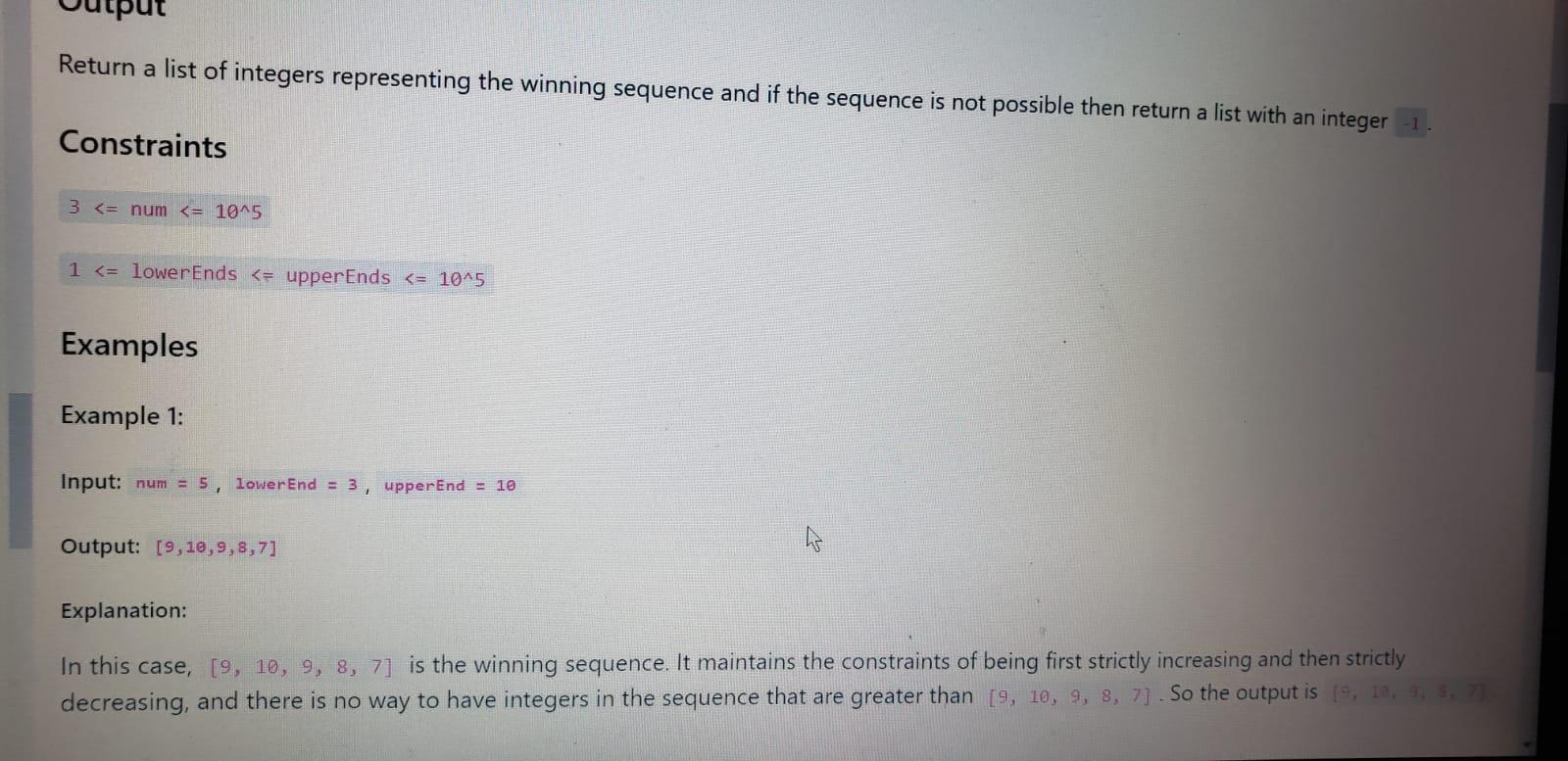Answered step by step
Verified Expert Solution
Question
1 Approved Answer
Python Solution please,the function has 3 arguments Amazon Online Assessment (OA) - Winning Sequence Construct sequence using a specified number of integers within a range.


 Python Solution please,the function has 3 arguments
Python Solution please,the function has 3 arguments
Amazon Online Assessment (OA) - Winning Sequence Construct sequence using a specified number of integers within a range. The sequence must be strictly increasing at first and then strictly decreasing. The goal is to maximize the sequence array elements starting from the beginning. Stuck? Disc For example, [4, 5, 4, 3, 2] beats [3,4,5,4,3] because its first element is larger, and [4, 5, 6, 5, 4] beats [4,5,4,3,2] because its third element is larger. Given the length of the sequence and the range of integers, return the winning sequence. If it is not possible to construct such a sequence, return -1. Write an algorithm that returns a winning sequence and -1 if the sequence is not possible. Input The input to the function/method consists of three arguments: num: an integer representing the size of sequence to create lowerEnd : an integer representing the lower end of integer range upperEnd an integer representing the upper end of integer range. Amazon Online Assessment (OA) - Winning Sequence Construct sequence using a specified number of integers within a range. The sequence must be strictly increasing at first and then strictly decreasing. The goal is to maximize the sequence array elements starting from the beginning. Stuck? Disc For example, [4, 5, 4, 3, 2] beats [3,4,5,4,3] because its first element is larger, and [4, 5, 6, 5, 4] beats [4,5,4,3,2] because its third element is larger. Given the length of the sequence and the range of integers, return the winning sequence. If it is not possible to construct such a sequence, return -1. Write an algorithm that returns a winning sequence and -1 if the sequence is not possible. Input The input to the function/method consists of three arguments: num: an integer representing the size of sequence to create lowerEnd : an integer representing the lower end of integer range upperEnd an integer representing the upper end of integer range. Amazon Online Assessment (OA) - Winning Sequence Construct sequence using a specified number of integers within a range. The sequence must be strictly increasing at first and then strictly decreasing. The goal is to maximize the sequence array elements starting from the beginning. Stuck? Disc For example, [4, 5, 4, 3, 2] beats [3,4,5,4,3] because its first element is larger, and [4, 5, 6, 5, 4] beats [4,5,4,3,2] because its third element is larger. Given the length of the sequence and the range of integers, return the winning sequence. If it is not possible to construct such a sequence, return -1. Write an algorithm that returns a winning sequence and -1 if the sequence is not possible. Input The input to the function/method consists of three arguments: num: an integer representing the size of sequence to create lowerEnd : an integer representing the lower end of integer range upperEnd an integer representing the upper end of integer range.
Step by Step Solution
★★★★★
3.40 Rating (153 Votes )
There are 3 Steps involved in it
Step: 1
code...
Get Instant Access to Expert-Tailored Solutions
See step-by-step solutions with expert insights and AI powered tools for academic success
Step: 2

Step: 3

Ace Your Homework with AI
Get the answers you need in no time with our AI-driven, step-by-step assistance
Get Started


